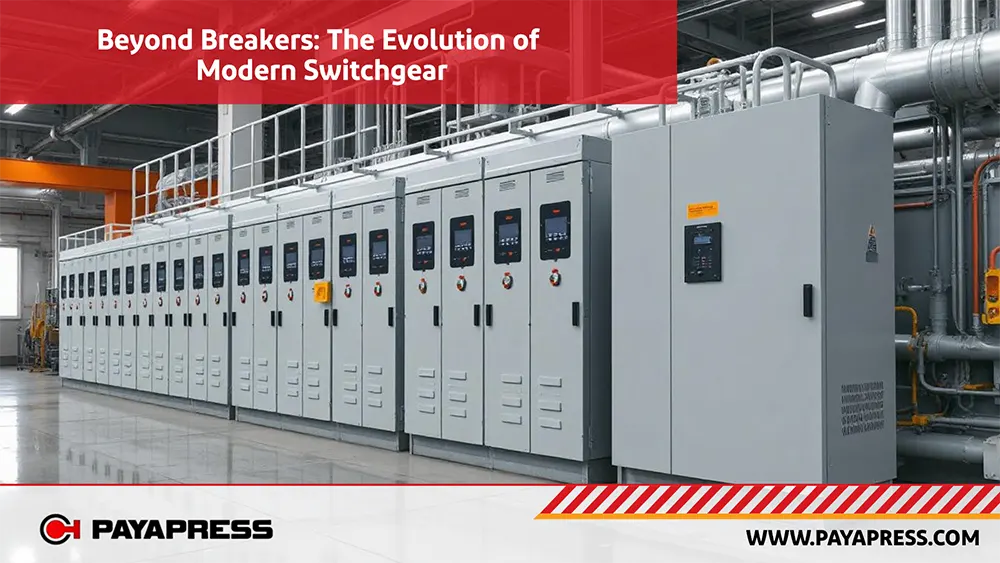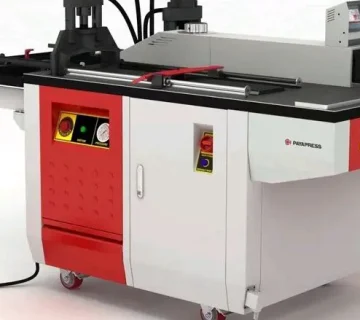Switchgear systems have come a long way since their inception, evolving from basic mechanical systems to advanced electrical distribution units that are integral to modern power grids. In today’s world, switchgear is essential for the safe and efficient distribution of electricity across various industries and infrastructures. As energy demands continue to rise, so too does the need for reliable and innovative switchgear solutions. This article explores the evolution of modern switchgear and how innovations such as busbar machines and automatic punching machines have revolutionized the industry.
The Foundation: Early Switchgear Systems
Switchgear, in its most basic form, is a combination of electrical disconnect switches, fuses, or circuit breakers used to control, protect, and isolate electrical equipment. The primary role of switchgear is to ensure the safety of both the equipment and personnel by isolating parts of an electrical circuit during maintenance or when a fault occurs.
In the early days, switchgear was bulky, cumbersome, and largely manual. Operators needed to engage or disengage systems mechanically, which increased the risk of human error and extended downtime during maintenance or repairs. Safety standards were lower, and the efficiency of early switchgear left much to be desired. However, as electrical grids expanded, so did the need for more efficient, reliable, and safer switchgear systems.
The Shift Toward Automation
With the advent of automation in the mid-20th century, switchgear systems began to change dramatically. Automation allowed for the integration of electrical and mechanical components that could operate independently, minimizing the need for manual intervention. This transformation improved operational safety and reduced the risk of faults and failures.
Moreover, as automation technologies advanced, switchgear became more compact and efficient. This period saw the introduction of automatic busbar processing machines, which made the manufacturing and installation of switchgear components faster and more precise. These machines enabled the accurate shaping and punching of copper and aluminum busbars, which are the backbone of modern switchgear systems.
Busbars: The Heart of Modern Switchgear
At the core of any modern switchgear system is the busbar, a metallic strip or bar made from copper, brass, or aluminum that conducts electricity within a switchboard or electrical system. Busbars are critical components that ensure the safe distribution of power, making them a vital part of modern electrical infrastructure.
Busbars are favored because they offer low resistance and high current-carrying capacity. In switchgear systems, they are used to transfer large amounts of electrical power across multiple circuits while maintaining reliability and reducing energy loss. The evolution of busbar processing machines has played a significant role in enhancing the capabilities of busbars in switchgear systems.
Busbar Bender Machines: Precision and Efficiency
With the increasing complexity of electrical systems, the demand for precision in busbar fabrication has grown significantly. Enter the busbar bender machine, a specialized tool designed to bend copper or aluminum busbars to exact specifications. These machines are essential for creating busbars that fit perfectly into switchgear systems, reducing assembly time and improving overall efficiency.
Hydraulic busbar bending machines have become standard in the industry, allowing manufacturers to produce custom busbars for switchgear systems of all shapes and sizes. These machines can bend busbars into precise angles and shapes, ensuring that they meet the stringent safety and performance standards required in modern electrical systems.

Busbar Punching Machines: Streamlining Production
Another important innovation in the evolution of switchgear is the busbar punching machine, which is used to create holes or slots in busbars for mounting or connecting electrical components. These machines, often integrated with CNC (Computer Numerical Control) technology, offer unparalleled precision and speed in busbar fabrication.
CNC busbar punching machines and automatic punching machines allow manufacturers to produce busbars with intricate designs and configurations, ensuring that switchgear systems can be tailored to meet the specific needs of different industries. The ability to produce busbars with consistent quality and accuracy has significantly improved the reliability and safety of modern switchgear systems.
Modern Switchgear: A Symphony of Safety and Efficiency
The evolution of switchgear has not only focused on improving the fabrication and assembly of components like busbars but also on enhancing the overall safety and efficiency of electrical distribution systems.
Compact Design and Modularity
One of the most noticeable trends in modern switchgear is the shift toward compact, modular designs. Unlike the bulky switchgear systems of the past, today’s systems are much smaller, allowing for easier installation and maintenance. Modular switchgear systems are also more flexible, enabling businesses to scale their electrical infrastructure up or down as needed.
Busbar systems play a key role in this modularity. The ability to fabricate custom busbars using advanced busbar cutting machines and busbar bending machines allows manufacturers to create switchgear systems that are highly adaptable to different settings and environments. This flexibility is especially important in industries like renewable energy, where electrical demands can fluctuate significantly.
Advanced Safety Features
Safety has always been a top priority in switchgear design, and modern systems are equipped with a wide range of safety features to protect both equipment and personnel. Innovations like copper busbar machines and 3-in-1 busbar machines have made it easier to fabricate busbars that are more resilient and capable of withstanding high levels of electrical current without overheating or failing.
In addition to physical safety features, modern switchgear systems are increasingly incorporating digital technologies that enable real-time monitoring and diagnostics. These systems can detect faults or anomalies in the electrical network and automatically isolate problem areas, reducing the risk of widespread outages or damage to equipment.
Connectivity and the Future of Switchgear
The integration of Industry 4.0 technologies is pushing the boundaries of what switchgear systems can achieve. Today’s switchgear is more than just a collection of switches and circuit breakers—it is a connected, intelligent system capable of communicating with other parts of the electrical grid.
Through IoT (Internet of Things) connectivity, modern switchgear systems can monitor energy usage, predict maintenance needs, and optimize electrical distribution in real-time. These capabilities are critical for industries that require uninterrupted power supply, such as data centers, hospitals, and manufacturing facilities.
The ability to monitor and control switchgear systems remotely also reduces the need for on-site personnel, improving operational efficiency and reducing costs. As the energy landscape continues to evolve, we can expect switchgear systems to become even more integrated with renewable energy sources, further enhancing their role in the global electrical infrastructure.
Conclusion: The Future of Switchgear is Here
Switchgear systems have come a long way from their early days as simple mechanical devices. Today, they are complex, highly automated systems that play a crucial role in ensuring the safe and efficient distribution of electricity across industries. The evolution of busbar machines, and advanced fabrication technologies has transformed the way switchgear is designed, manufactured, and maintained.
As industries continue to demand more reliable and efficient electrical systems, the importance of high-quality switchgear cannot be overstated. Whether it’s through the use of busbar bender machines, CNC punching machines, or modular switchgear designs, the future of switchgear is bright—and it’s already here.




No comment